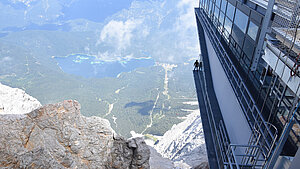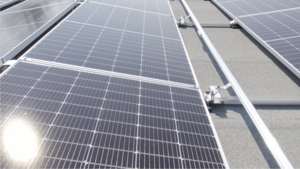Both systems are components of a fall protection system which is legally mandated when working at a dangerous height (roofs, construction sites, industry, etc.), and they require the use of personal protective equipment (PPE).
Read on if you would like to find out more details about restraint systems and fall arrest systems. The difference between the two systems is made clearer by explaining their components and providing concise practical examples.
What is a restraint system?
As the name indicates, a restraint system holds the user back. In terms of fall protection, this means that the danger area where a fall is possible cannot even be accessed in the first place. It is therefore not possible to pass over the fall edge- for example a roof edge. This reduces the fall risk.
A restraint system thus prevents a person from falling by holding them (back) at a specific location or distance. For this, the person to be secured wears a restraint harness as personal protective equipment (PPE), which is attached to an anchorage device by means of a suitable lanyard.
Components of a restraint system
A restraint system for fall protection consists of:
1. Anchorage device
2. Lanyard
3. Restraint harness
An anchorage device is, for example, a safety roof hook on a pitched roof, or a lifeline system on a flat roof. The lanyard - consisting of a cable and a connection device including a carabiner - is attached to this at one end. The other end is attached directly to the restraint harness (= personal protective equipment) which the user wears.
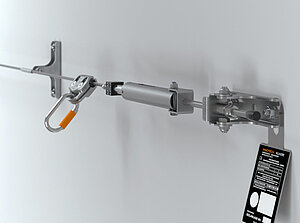
Lifeline Systems AIO
Our powerful AIO lifeline system provides a reliable and versatile solution.
The powerful lifeline system that offers a whole host of variants
Whether on a flat or pitched roof, in an industrial environment, in the energy industry, on poles, or in other application areas, the topic of fall protection is ever-present.

PPE LANYARDS
PERSONAL PROTECTIVE EQUIPMENT PPE
PPE LANYARDS are the secure connection to INNOTECH anchor points. There are a number of variations which fulfil the respective requirements in terms of operation and loading.
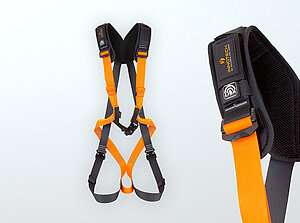
Personal Protective Equipment PPE
Whether on roofs, scaffolding, ladders, facades, or other fall-risk areas, compliant high-quality equipment for fall protection is an absolute must.
Secure connection between user and safety system
Our PPE personal protective equipment creates a secure connection between user and fall protection systems. Depending on application and situation, it provides optimum comfort, and impresses through its top quality.
When used correctly, a restraint system restricts the user’s radius of movement in such a way that he cannot even access the fall-risk areas. A fixed length or maximum adjustable length for the lanyard is recommended. The user is thus safely “held back” by the system.
Radius of movement and the orange zone - the border between a restraint and a fall arrest system
When the lanyard of a restraint system is attached to a fixed single anchor point as an anchorage device, this creates a circular working area. This area is the orange zone, and it sets the radius of movement for the restraint system. The length of the lanyard is set so that the fall edge (e.g. roof edge) cannot be passed over, and a fall is prevented. If it is necessary to access the red zone, then a fall arrest system must be used.
Important: Because of the fall risk, the red zone must be made as small as possible.
A restraint system based on multiple single anchor points requires re-attachment of the lanyard. In theory and by law this is acceptable, however in practice it is less convenient for the user.
Instead, for a restraint system, the installation of an anchorage device in the form of a lifeline system or a rail system is recommended. With a design which is passable, re-attachment is unnecessary. This is more convenient and also extends the orange zone, and accordingly the restraint system’s radius of movement.
In the worst case, a fall may occur if the system is used incorrectly.
The user must possess sufficient specialist knowledge about setting the length of the lanyard correctly and the general use of PPE. In the worst case, a fall may occur if the system is used incorrectly. The user obtains the necessary knowledge in appropriate specialised training sessions.
Examples of use PPE restraint system for a flat roof
Even on flat roofs there is a high risk that people working there will fall, because the flat roof creates an illusion of safety. If no collective protection, such as guardrails, is installed, individual fall protection is necessary, at a minimum in the form of a restraint system with personal protective equipment (PPE).
Particularly where a flat roof is used for generating power by means of photovoltaic panels, this area of application has become increasingly significant because of increased roof access. The workers active there need to be protected from falls, not just during the installation, but also for subsequent maintenance.
Lifeline system as a restraint system on a flat roof
On this slightly inclined flat roof, a lifeline system was installed without roof penetration, before fitting the PV panels. Instead of multiple anchor points, a fixed cable system is used as the restraint system.
The fitters set the correct length of the lanyard, in order to avail of the retention function of the system.
Rail system as a restraint system on a flat roof
Instead of a lifeline system, a rail system can also be used as the anchorage device for a restraint system on a flat roof. The users attach themselves to the rail using special sliders connected to their PPE, and are thus protected by the restraint system against falling.
Certain rail systems can be attached directly to some substructures for PV panels.
What is a fall arrest system?
A fall arrest system intercepts a person who is falling. For fall protection, this type of system is required when the range of use of a restraint system is exceeded (transition from orange to red zone - see above) or a restraint system cannot be used because of local circumstances.
In contrast to a restraint system, a fall arrest system therefore does not prevent a fall, but instead reduces its consequences. The equipment necessary for a fall arrest system is similar to a restraint system: an anchorage device, a lanyard, PPE, and also a fall arrest device and/or energy absorber which reduces the forces from the fall which work on the body.
2 variants of the fall arrest system
In contrast to a restraint system, there are several variants in how a fall arrest system is structured. The major difference is whether a fall arrest device or an energy absorber are used. There are therefore two basic variants:
- Anchor point - Fall arrest device - Lanyard - Safety harness/Personal protective equipment
- Anchor point - Lanyard- Energy absorber - Safety harness/Personal protective equipment
There are fall protection systems which can be used both as restraint and fall arrest systems. In this regard, it is essential to comply with the minimum fall heights and variations of the respective systems, and to set the length of the lanyard exactly. Otherwise there is a risk to life, as described in the next section.
Potential risks with fall arrest systems
The following risks can be life-threatening when a fall arrest system is used, and they must be prevented:
- Impact with the ground
- Pendulum fall
- Collision with adjacent structures
- Failure of the lanyard because of excess load (falling over the edge)
- Incompatibility between the system's minimum fall height and the actual fall height
To prevent the life-threatening consequences of a fall, it is necessary to perform an exact calculation of the fall distance, taking into account the minimum fall height of the system being used and the actual fall height, the free fall distance of the energy absorber, potential shifts of harness straps and eyelets, cable deflection, and body size. The protection of edges and cables should also be checked.
Professional fall arrest systems provide the necessary data for the correct calculation and use.
Example of fall arrest system
A fall arrest system is used as the fall protection system for this pitched roof. It consists of these components:
- Lifeline system and roof hooks as anchorage devices
- Lanyard
- Energy absorber
- Personal protective equipment
This system can be used both as a restraint and a fall arrest system. For this, the correct length of the lanyard must be set by the users. Read more about this in our success story about Volkshaus Zürich.
Rescue after fall
To protect life and limb, a person who has fallen must be released from their situation and/or rescued. Appropriate measures are necessary to achieve this. A rescue system can also be integrated into a fall protection solution.
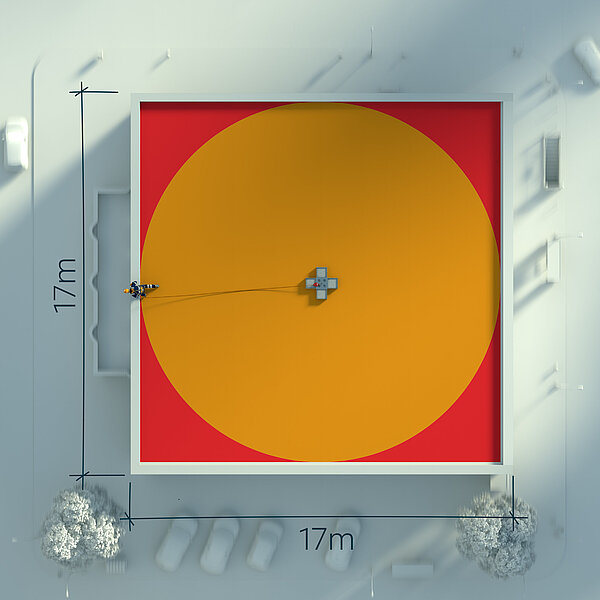
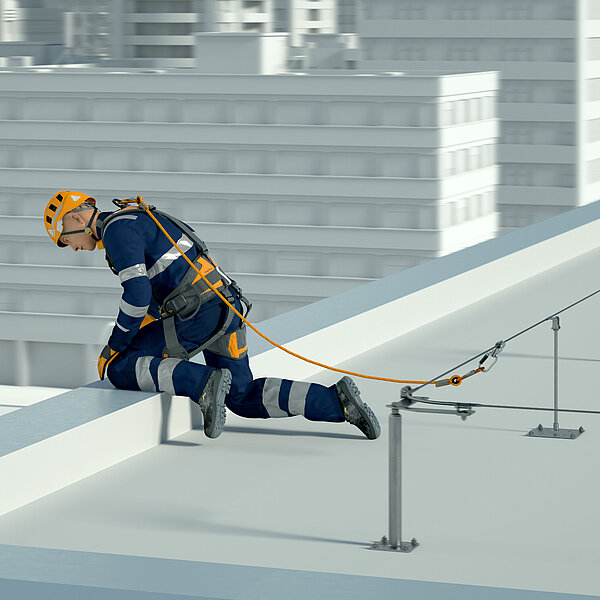
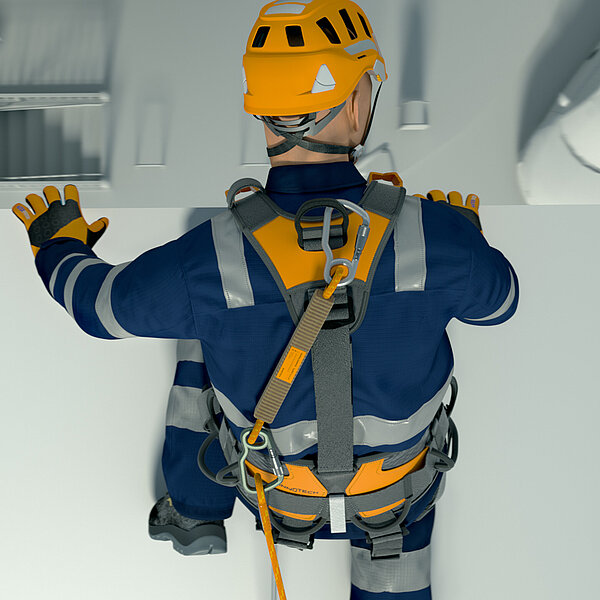
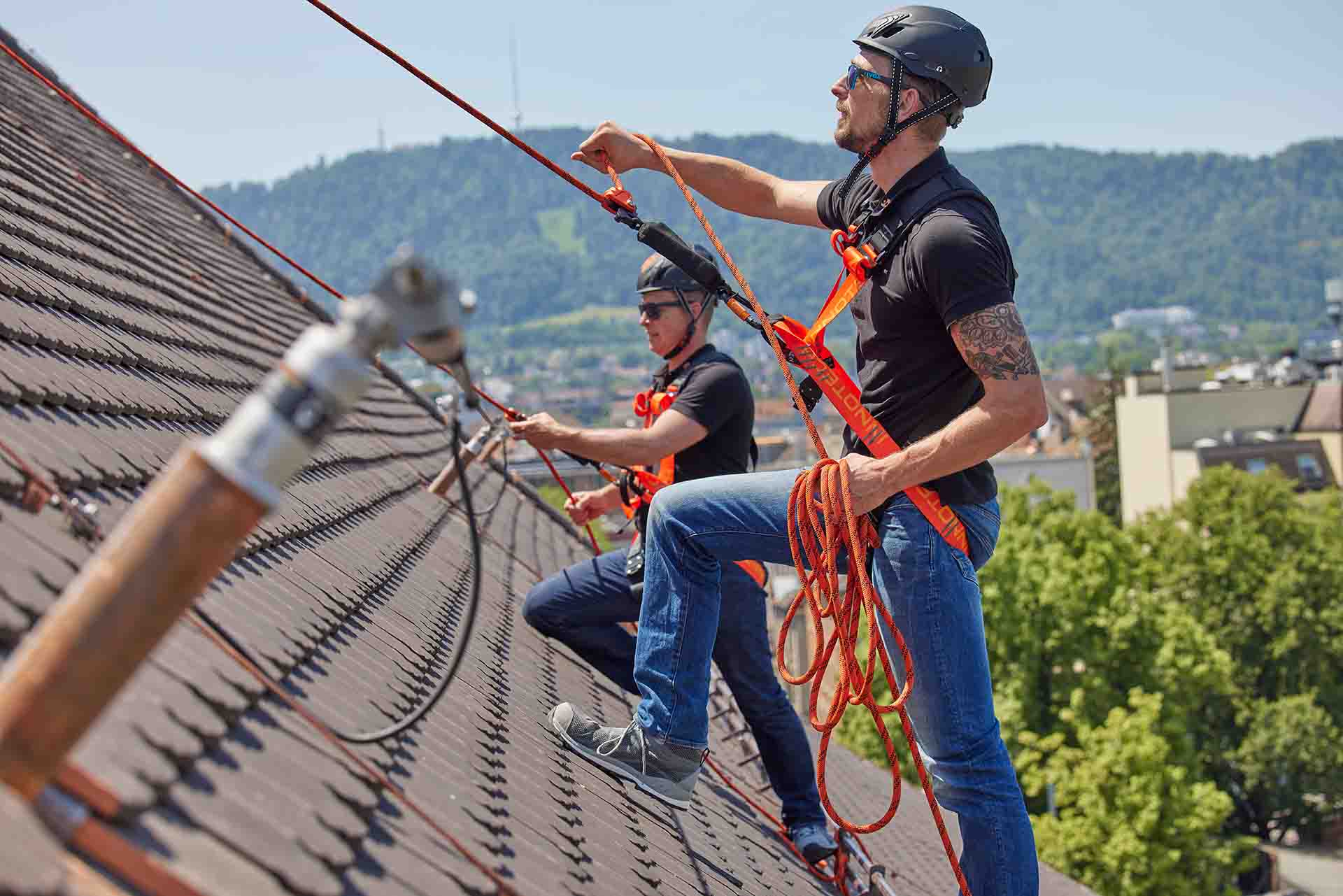
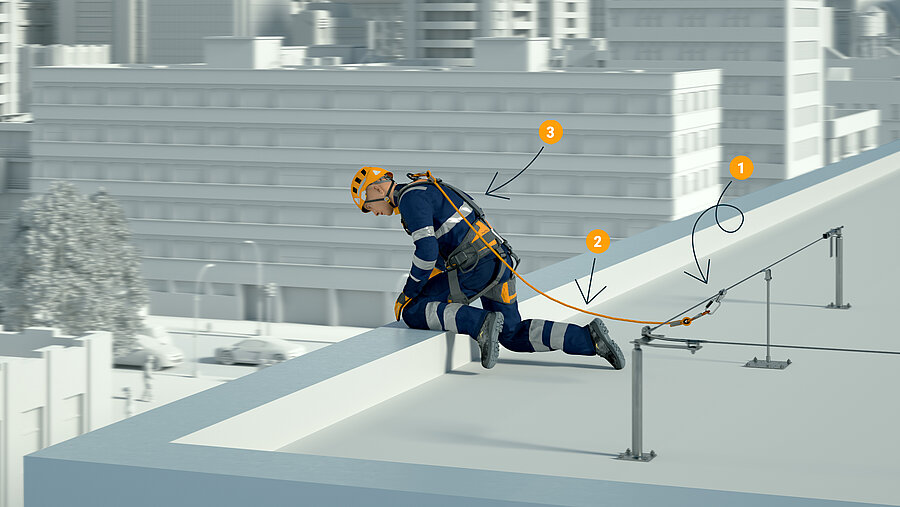
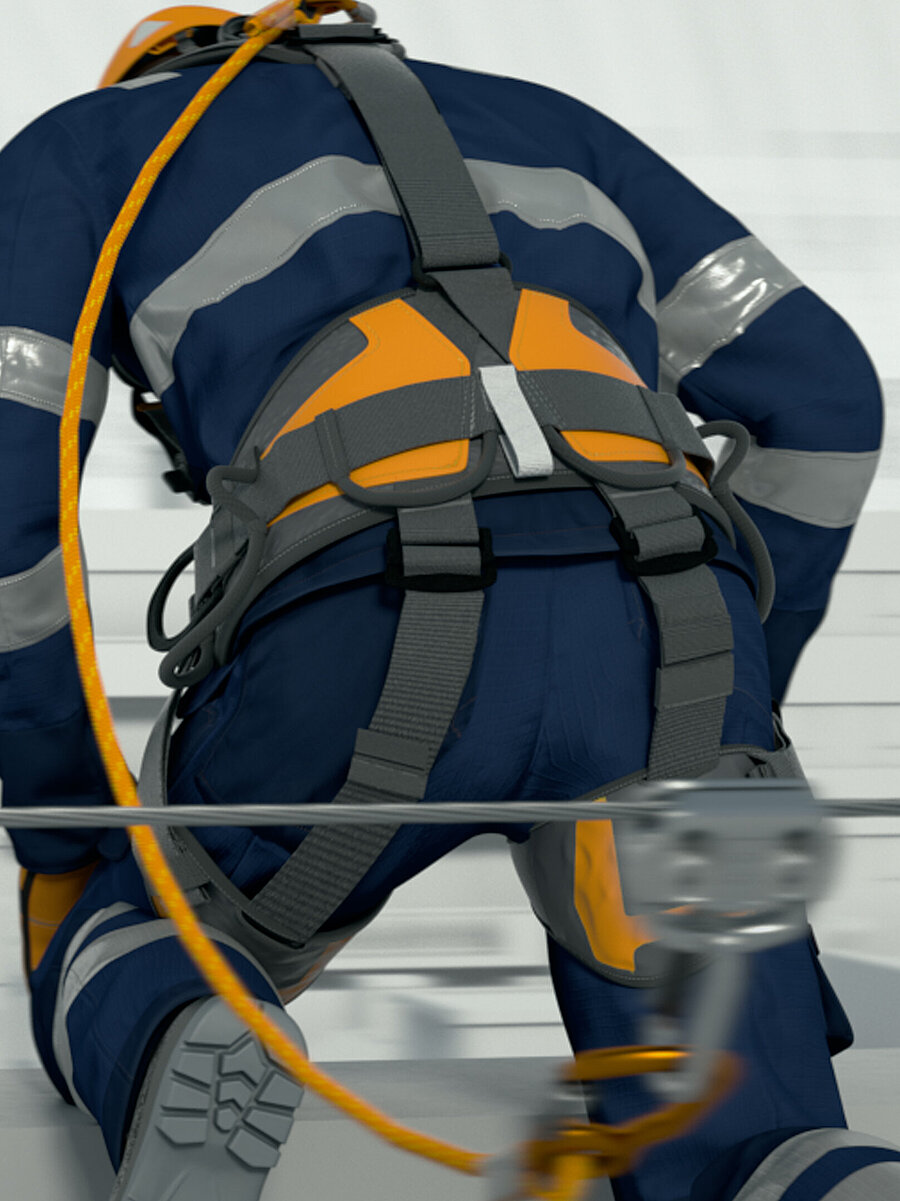
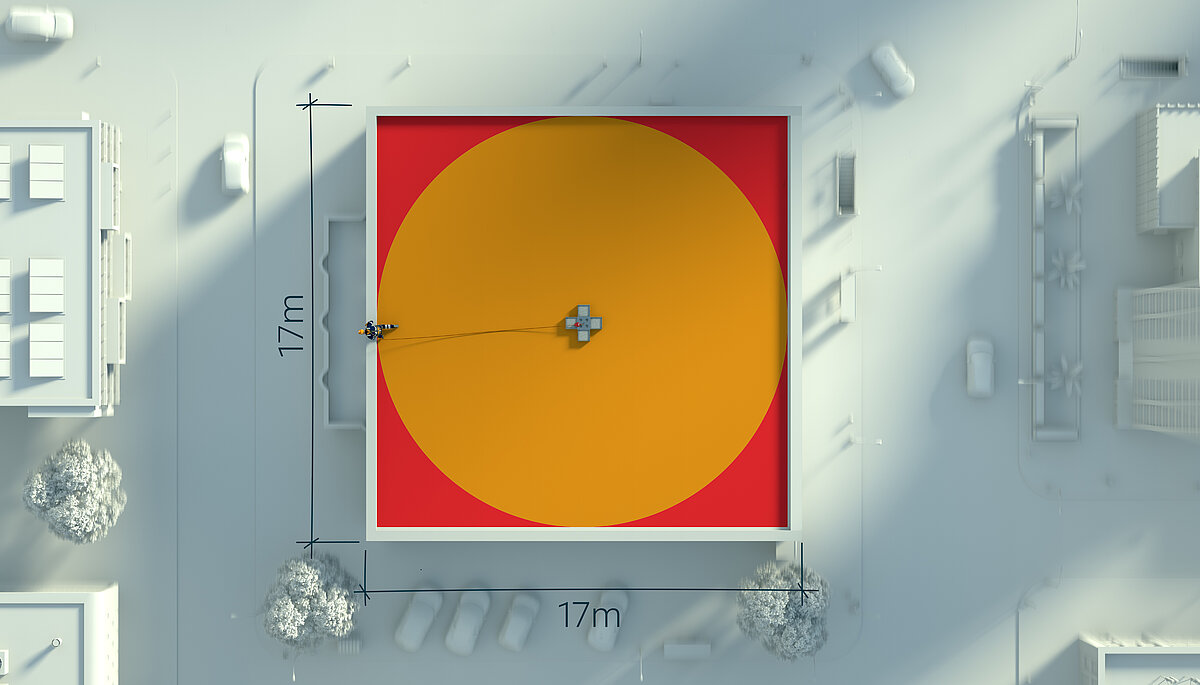
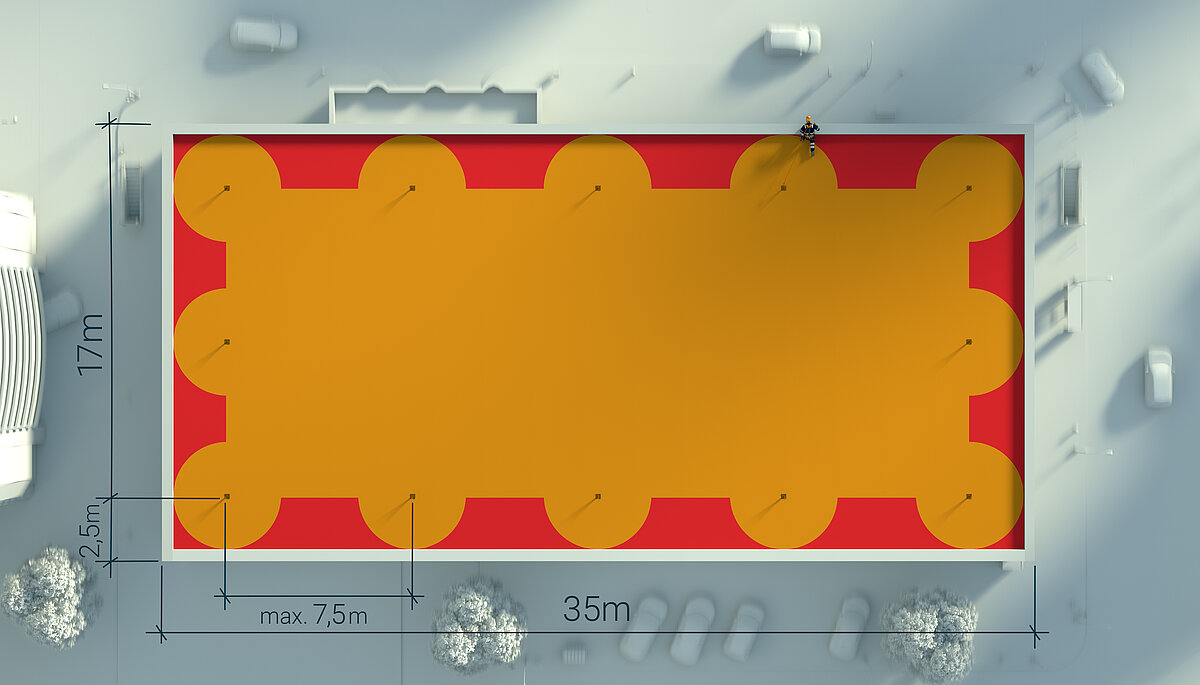
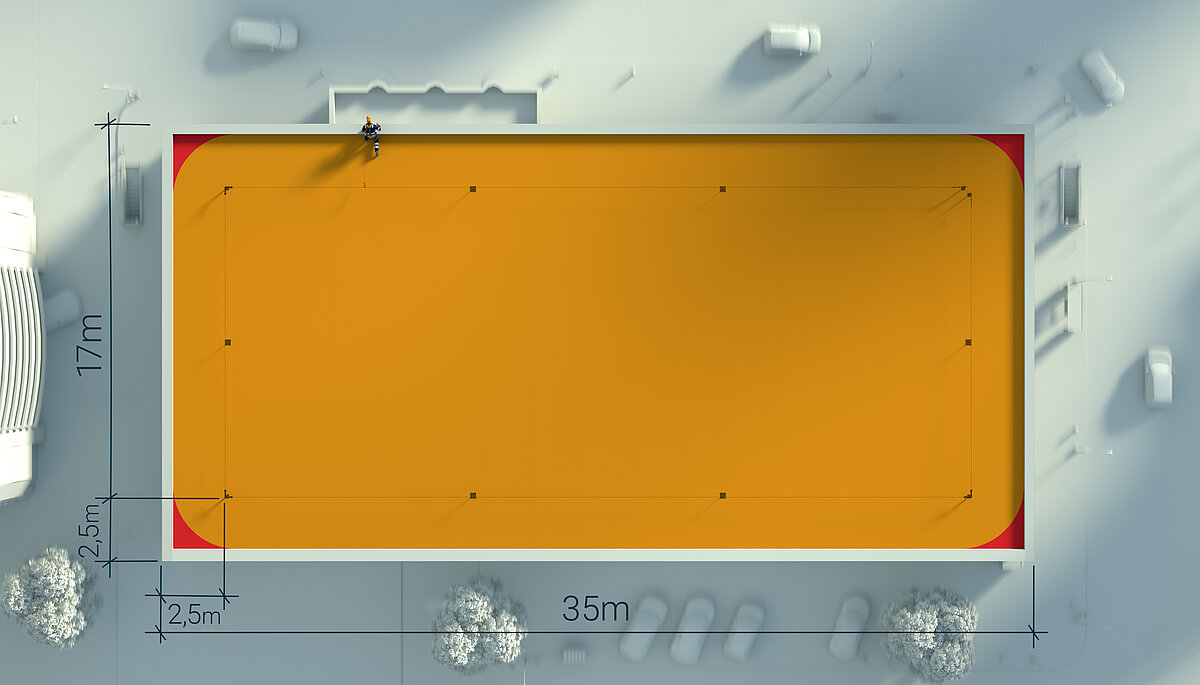
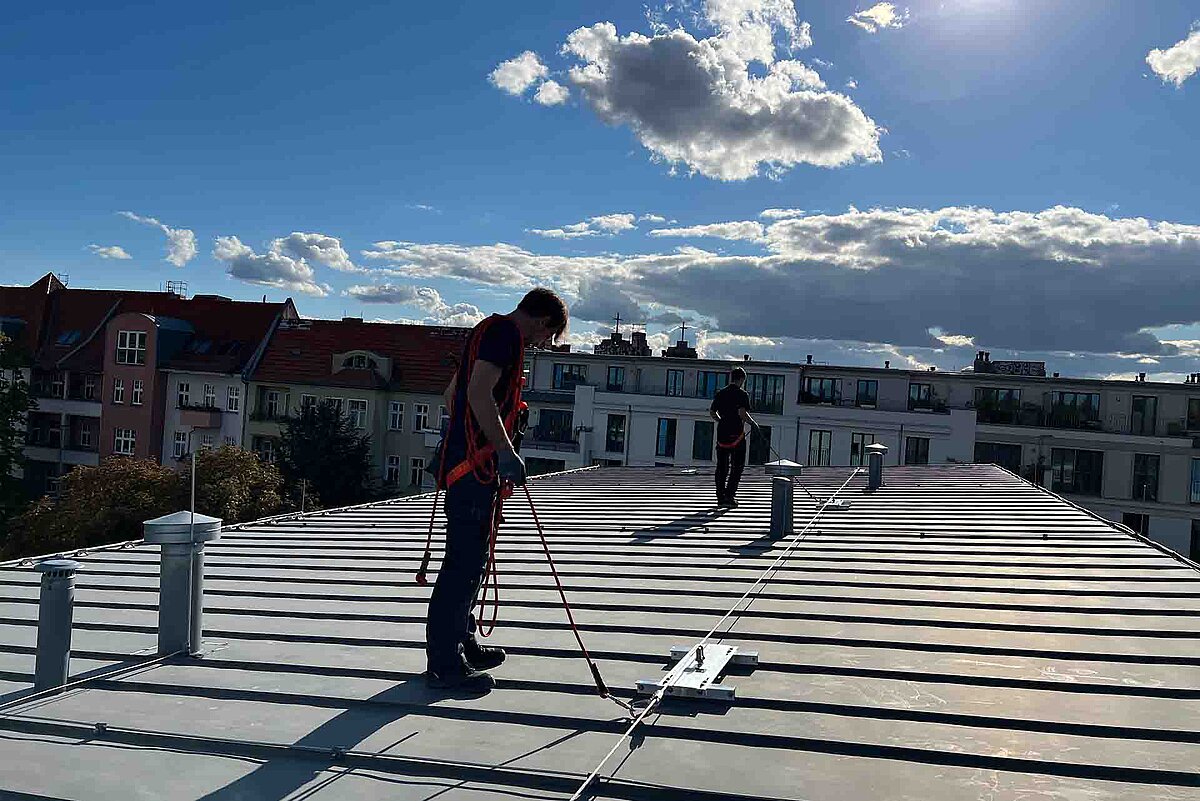
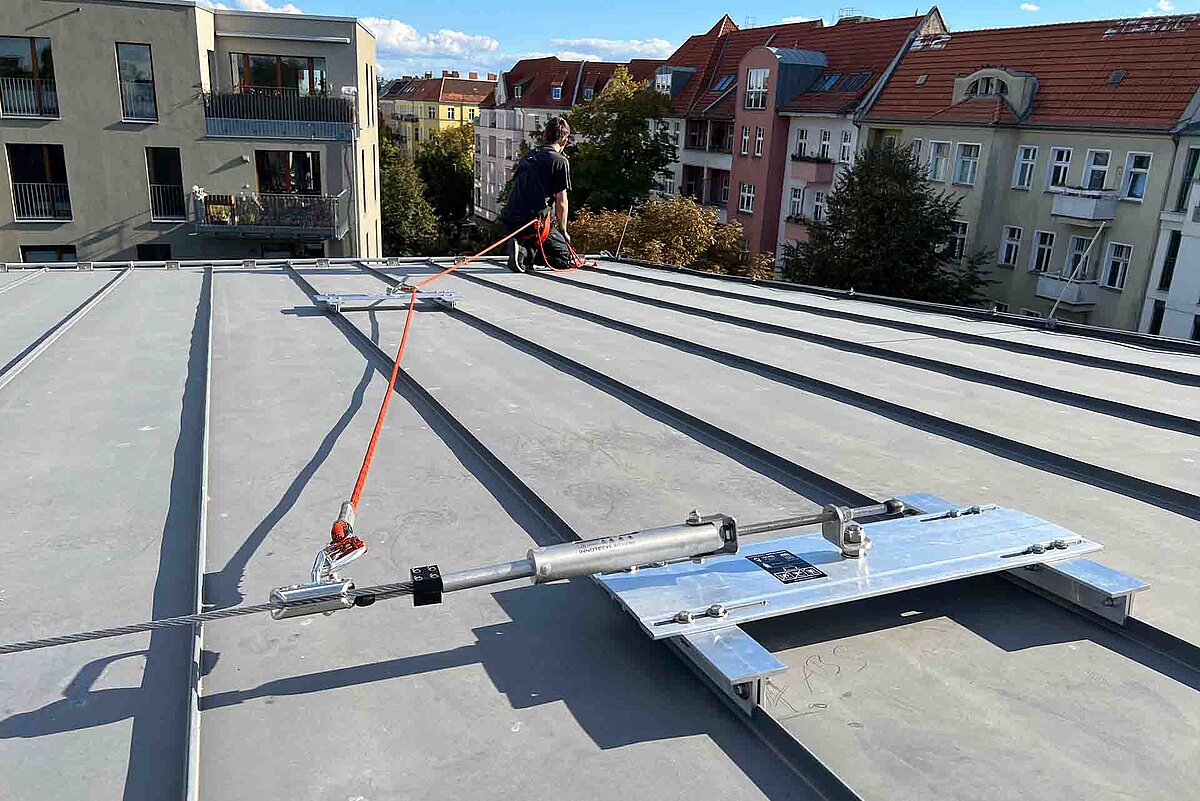
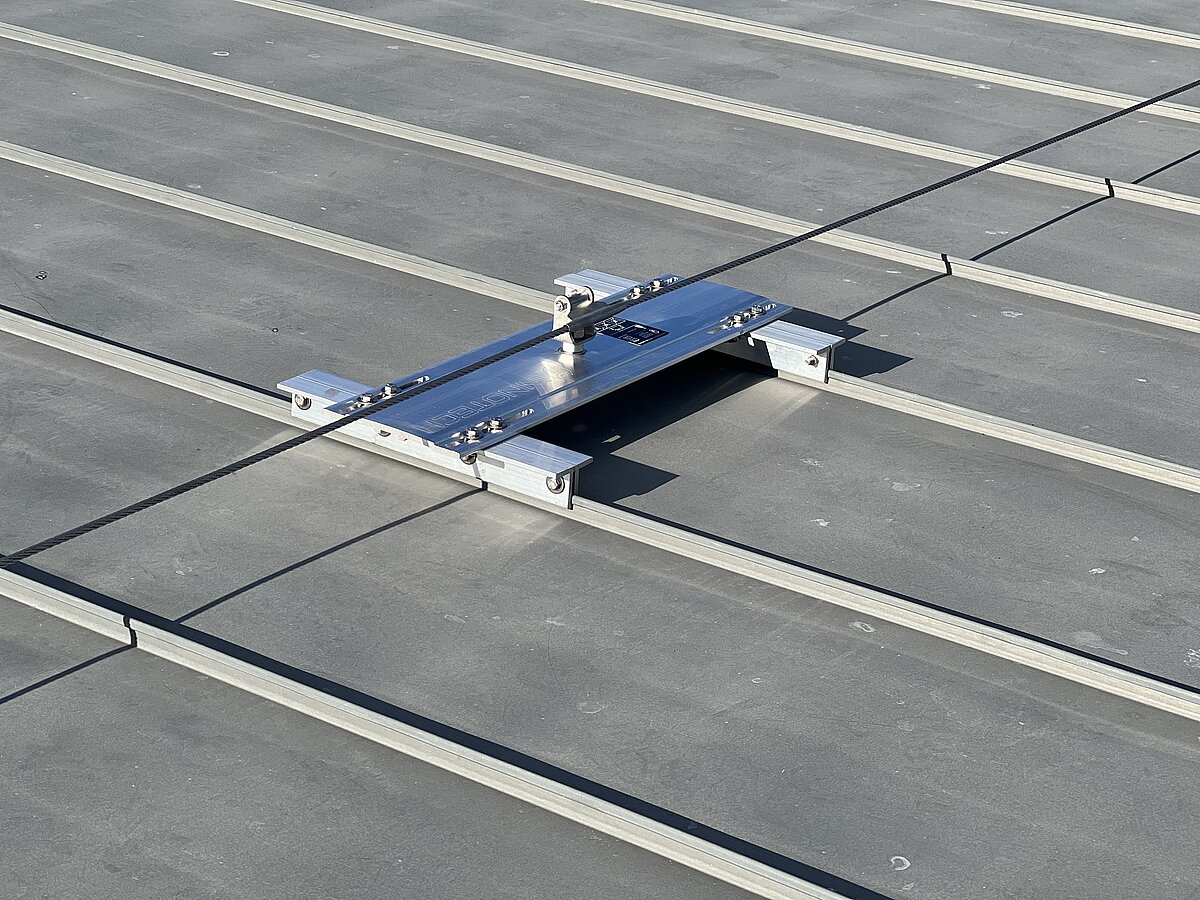
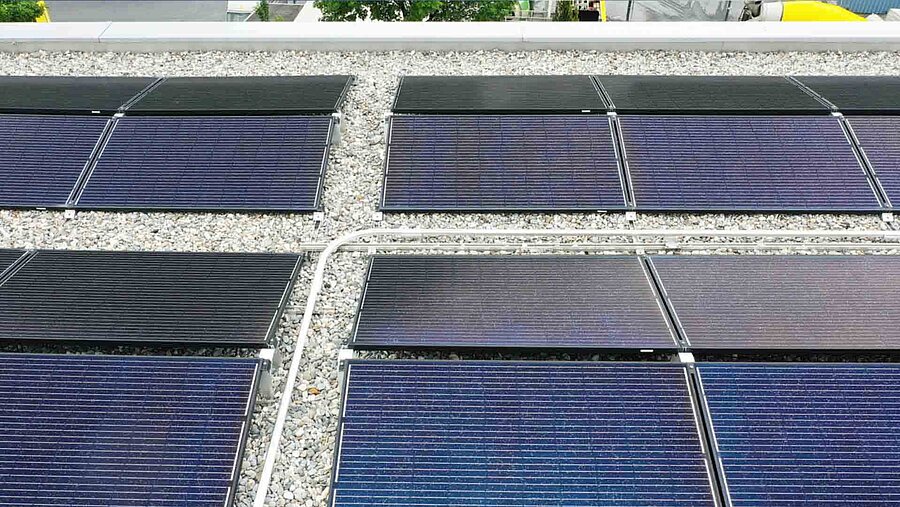
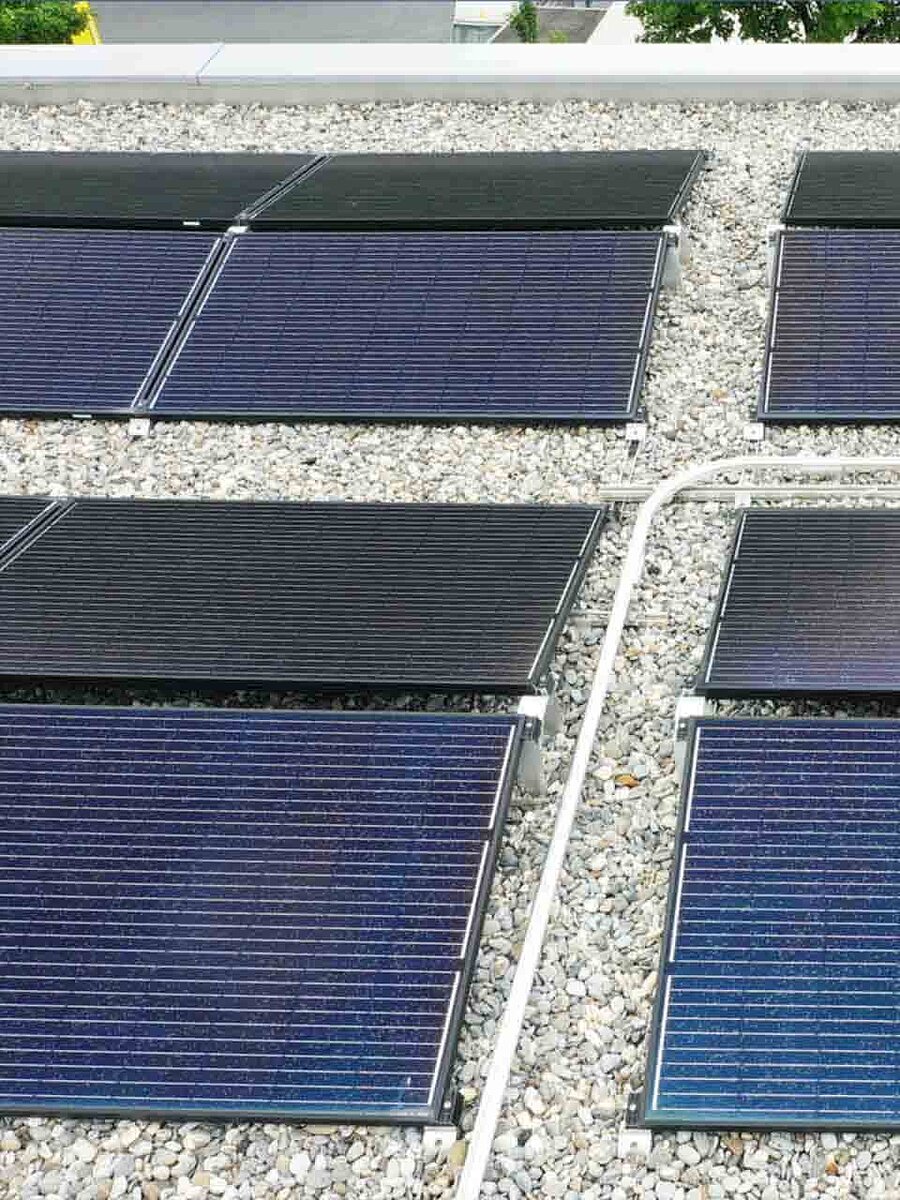
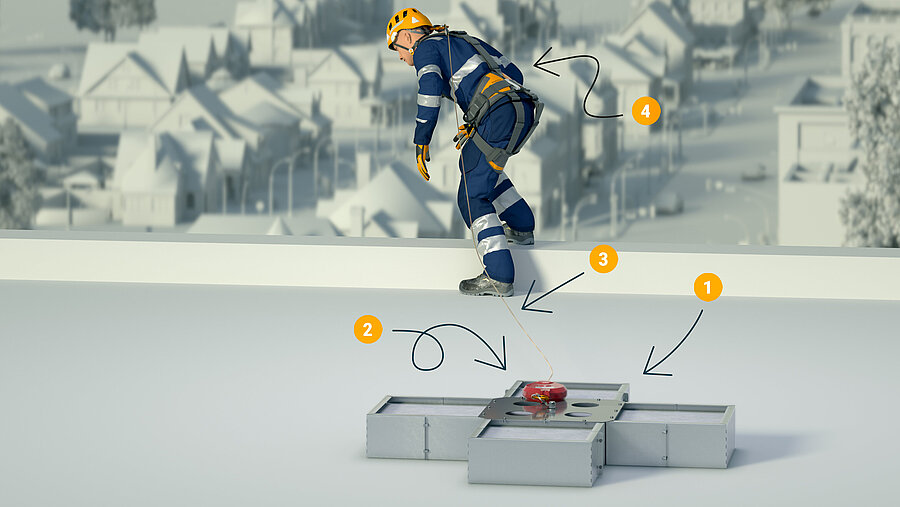
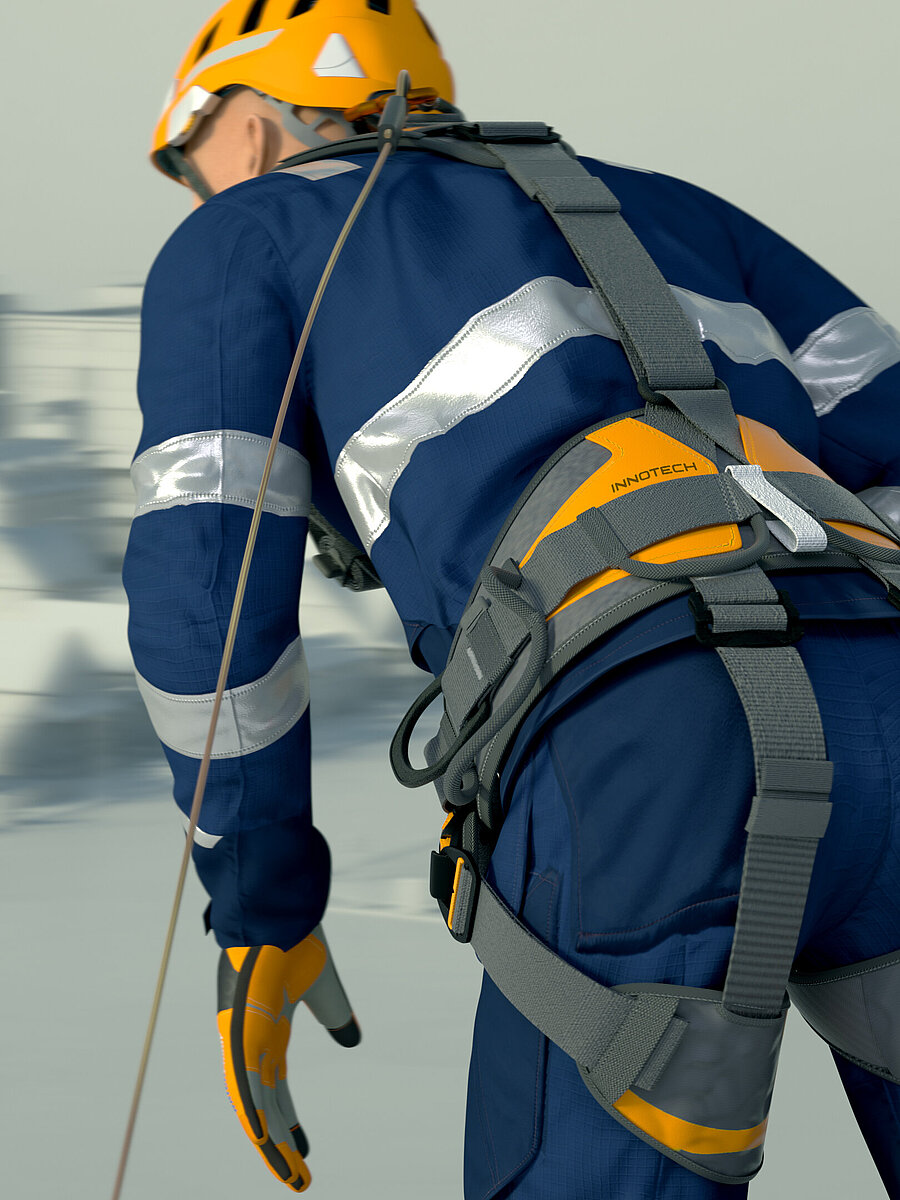
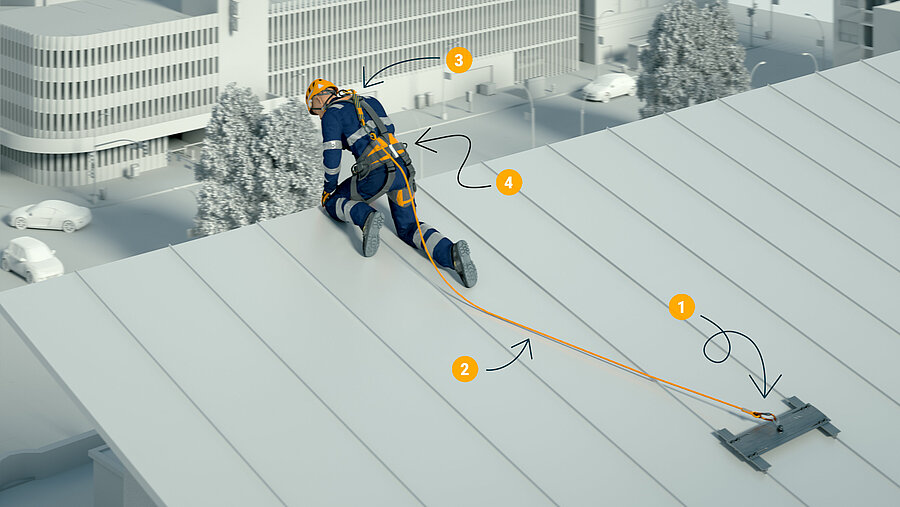
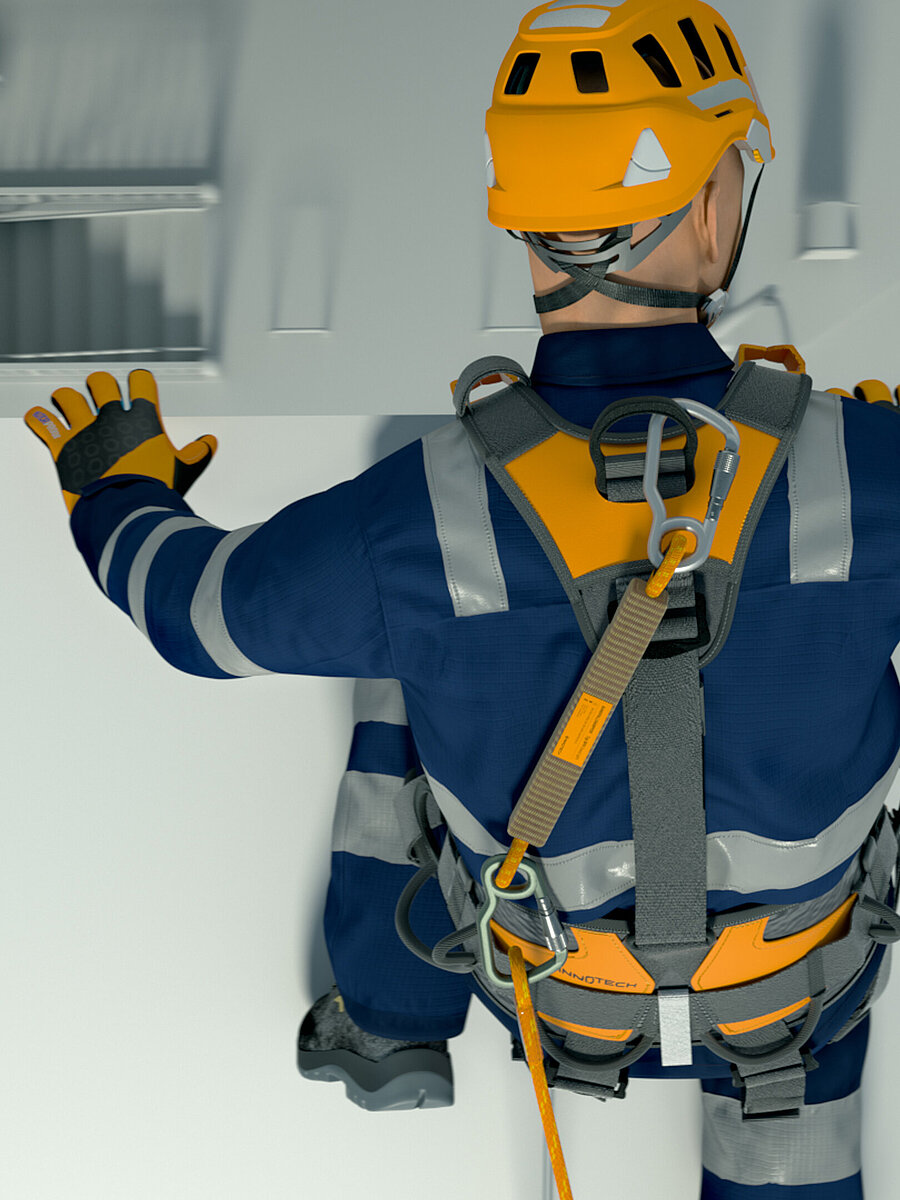
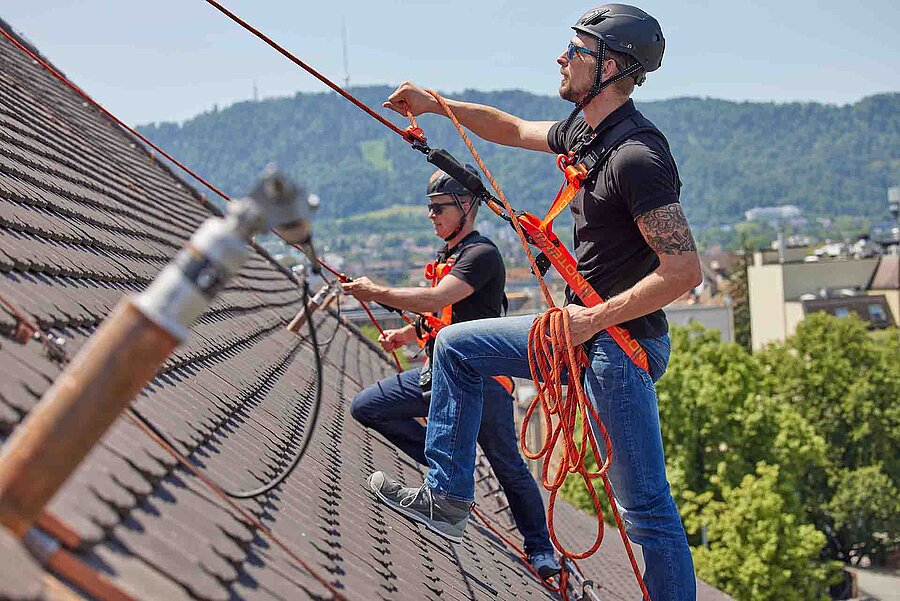
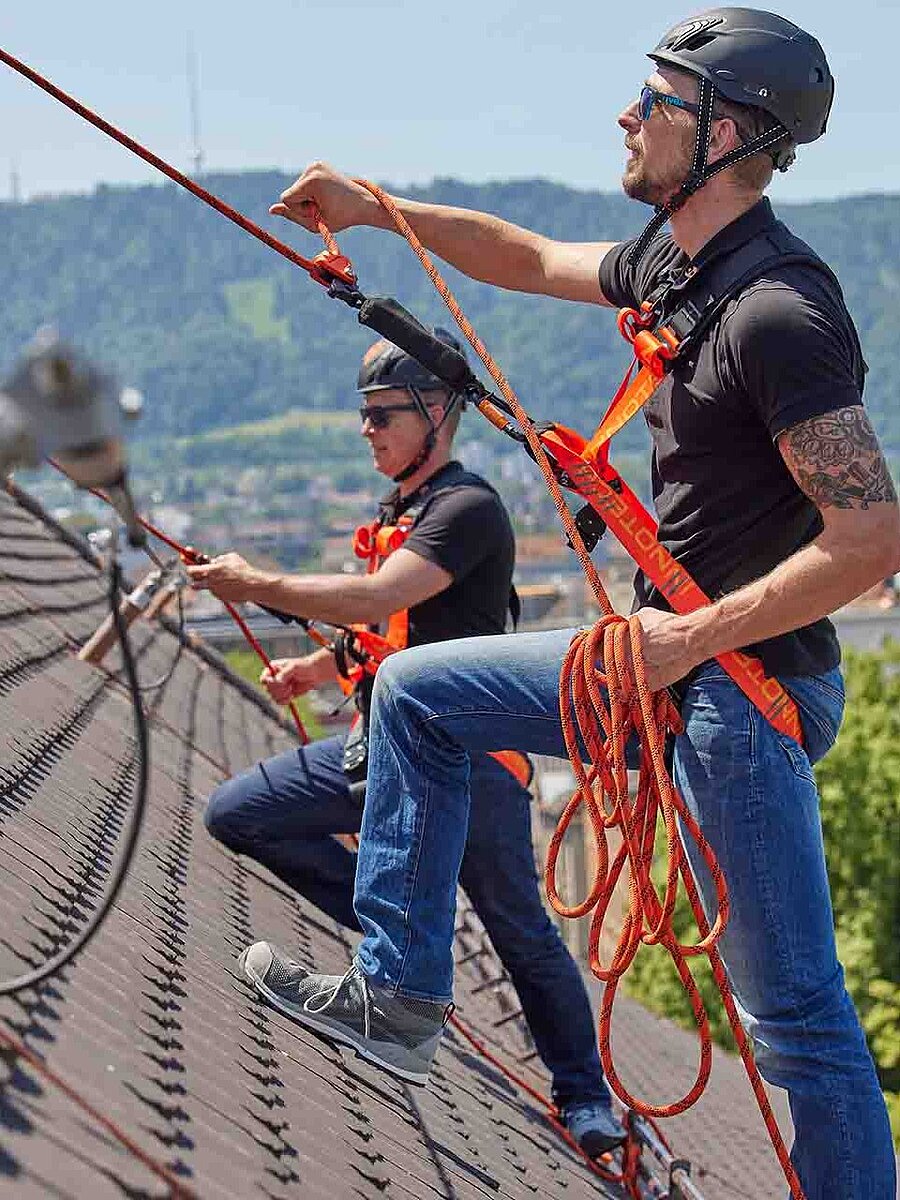
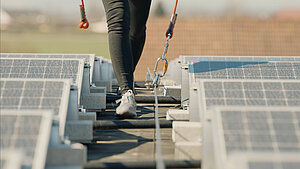
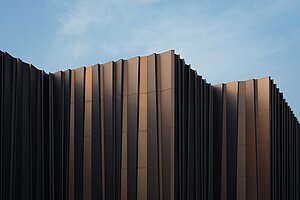
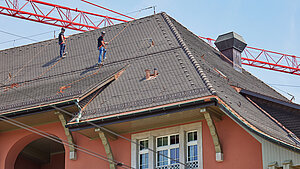
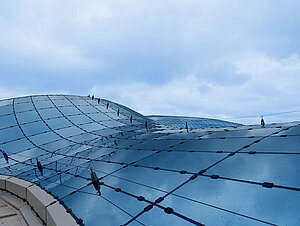
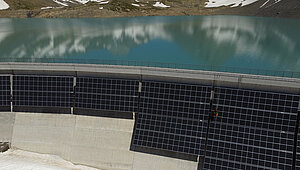
![[Translate to Englisch:] [Translate to Englisch:]](https://www.innotech-safety.com/fileadmin/_processed_/f/b/csm_Pendelsturz-Volkshaus-Zuerich_ab9c27d467.jpg)

